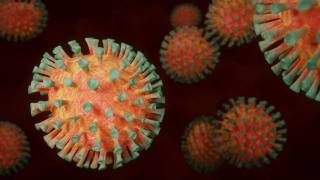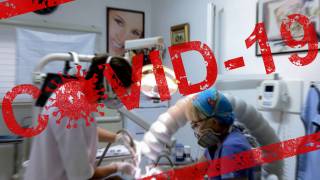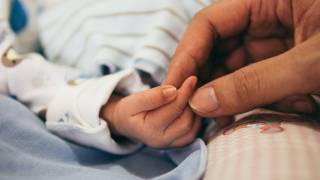Report Questions If Antibodies Confer Protection Against Coronavirus Reinfection

The Infectious Diseases Society of America (IDSA) published new guidance on the use of SARS-CoV-2 serologic tests that included various diagnostic recommendations.
The immune response to SARS-CoV-2 infection has not yet been fully elucidated, stated the IDSA on August 20, 2020. Early evidence suggests that, unlike other infectious diseases, anti-SARS-CoV-2 IgM antibodies become detectable later after symptom onset and rise nearly simultaneously with IgG, but after 2-weeks of infection.
Therefore, the IDSA panel said the ‘detection of IgM without IgG is uncommon.’
The panel identified 3 potential indications for serologic testing including the evaluation of patients with a high clinical suspicion for COVID-19 when molecular diagnostics are harmful, and at least 2-weeks have passed since symptom onset and multisystem inflammatory syndrome in children, and for conducting serosurveillance studies.
In line with other systematic reviews, our antibody comparisons stratified by time post-symptom onset indicate that serologic testing has limited utility for ruling out SARS-CoV-2 infection in the acute phases of illness.
Kimberly E. Hanson, M.D., chair of the IDSA’s COVID-19 diagnostic guidelines expert panel and associate professor of internal medicine at the University of Utah School of Medicine, said during an IDSA press briefing on August 20th: “There's been a lot of interest in developing SARS-CoV-2-specific tests that can detect antibodies directed against the SARS-CoV-2 virus.”
Pooled sensitivity estimates for IgM in week 2 post-symptom onset was 73 percent. Thus, relying on IgM for the diagnosis of COVID-19 at 2-weeks would miss 108 actual cases out of 1,000 patients when the clinical suspicion for infection is high.
This data indicates the optimal performance of serologic testing occurs approximately 3 to 4 weeks of post-symptom onset and is achieved using IgG or total antibody assays. Overall, IgG’s sensitivity or total antibody at four weeks was 88% and 95%, respectively.
Using IgG or total antibody reduces but does not eliminate, false-negative results at four weeks. And data on time points beyond four weeks is limited.
Interpretation of test specificity also requires caution because little information is available from individuals who were tested due to clinical suspicion of SARS-CoV-2. And most commercial antibody assays do not provide quantitative results and false-positive IgG detection is still possible.
It is important to emphasize that serologic test performance is highly variable, and sometimes the same manufacturer’s assay performed quite differently across studies. Going forward, serologic assay studies should include a description of the severity of illness using well-defined grading criteria.
The exact timing of testing was also not specified in all studies.
For example, patients with symptoms for “less than 21 days” likely bridged various time points but were lumped in this guideline in the three weeks. Uncertainty around the timing of testing could have affected the time-stratified analyses.
Perhaps the most significant interest in serologic testing has been for tracking SARS-CoV-2 exposure in the community.
Accurate estimates of seroprevalence depend on the true prevalence of past infection in a given population and the sensitivity and specificity of the test used to detect antibodies. When the true incidence of the disease is low, small decreases from a test sensitivity of 100% have a minimal impact on the negative predictive value of a test, while reductions in specificity artificially inflate measures of seroprevalence.
As the actual prevalence increases, similar deviations in sensitivity are more impactful, while reductions in specificity are less noticeable. Across the U.S., including regions significantly impacted by COVID-19, the prevalence of past infection is still expected to be relatively low (i.e., <7%).
Seroprevalence in long term care facilities, congregate settings, or factories that have experienced an outbreak are likely to have much higher seroprevalence. Still, these are situations that do not mirror the broader pandemic in most communities.
With this information, the IDSA expert panel issued 8 recommendations for antibody testing, which are inserted below:
Recommendation 1. Serologic testing to diagnose SARS-CoV-2 infection should not be performed during the first 14 days following symptom onset. (Conditional recommendation, very low certainty of evidence.)
Recommendation 2. When SARS-CoV-2 infection requires laboratory confirmation for clinical or epidemiological purposes, testing for SARS-CoV-2 immunoglobulin G or total antibody should be done 3 to 4 weeks after symptom onset to detect evidence of past SARS-CoV-2 infection. (Conditional recommendation, very low certainty of evidence.)
Recommendation 3. The IDSA panel makes no recommendation for or against using immunoglobulin M antibodies to detect past SARS-CoV-2 infection. (Conditional recommendation, very low certainty of evidence.)
Recommendation 4. Immunoglobulin A antibodies should not be used to detect evidence of past SARS-CoV-2 infection. (Conditional recommendation, very low certainty of evidence.)
Recommendation 5. IgM or IgG antibody combination tests should not be used to detect evidence of past SARS-CoV-2 infection. (Conditional recommendation, very low certainty of evidence.)
Recommendation 6. IgG antibody should be used to provide evidence of COVID-19 infection in symptomatic patients with high clinical suspicion and repeatedly negative nucleic acid amplification tests (NAAT). (Weak recommendation, very low certainty of evidence.)
Recommendation 7. In pediatric patients with the multisystem inflammatory syndrome, both IgG antibody and NAAT should be used to provide evidence of current or past COVID-19 infection. (Strong recommendation, very low certainty of evidence.)
Recommendation 8. The IDSA panel makes no recommendation for or against using capillary vs. venous blood for serologic testing to detect SARS-CoV-2 antibodies. (Knowledge gap.)
In conclusion, ‘clinicians and public health officials need to understand the performance of serology assays used in their settings to interpret anti-SARS-CoV-2 antibody test results accurately. Whenever possible, serologic assays with established high sensitivity and specificity should be employed.’
‘IgG and total antibody tests appear to have better sensitivity and specificity than other immunoglobulin classes and perform best when used between three to four weeks after symptom onset. But, the clinical indications for antibody testing to support a diagnosis of COVID-19 are limited.’
Future studies are needed to define the antibody dynamics and determine whether detection of antibodies and if so at what titers, confers protection against reinfection, concluded this IDSA report, published on August 18, 2020.
COVID-19 disease testing news is published by CoronavirusToday.
Our Trust Standards: Medical Advisory Committee
























